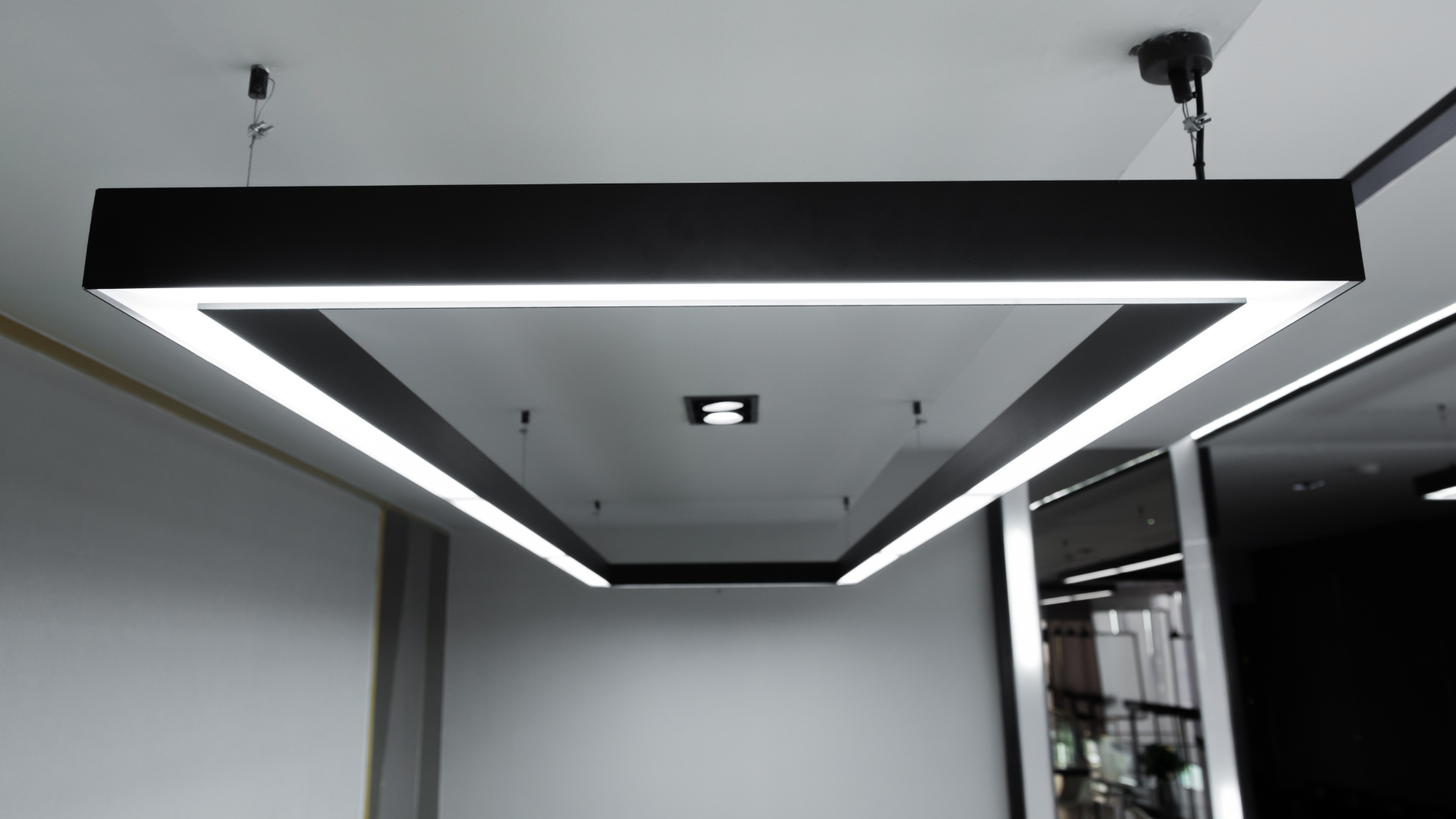How to read an LED driver label
Lighting specifications and technical information can be confusing. That's why the Lighting Facts label was created years ago — to help standardize tech specs and make it easier to choose lighting.
Now in the world of drivers, specifications are all over the map. The label from one driver to another is at the discretion of the manufacturer, and as you can guess, that leads to huge variations in how information is presented.
So, if you're looking for a replacement driver, buckle up. We're going to dig into all sorts of labels to help make sense of the jargon and help you find replacements more easily.
Admittedly, this article is very technical (and I might even say confusing). We created this for those of you who want to dig deep with these specifications and labels to understand what you have and how to replace it. We like to make lighting easier, but as you'll see there isn't much consistency or simplicity on this topic. 🙂
I highly recommend that you download our LED Driver Replacement Guide to record information as you go and make it easier to find a replacement.
For those of you who don't have the stomach for the technical details, our LED Driver Replacement Guide is still a helpful tool in cutting through the jargon and helping you figure out what kind of driver you need. Plus, you can always use our LED driver wizard to send us a photo of what you're replacing.
The real challenge is that our guide and wizard are helpful, but if you can't decipher the label, you're sort of up the creek without a paddle.
Now, enough of the intros and disclaimers. Since there's so much to this topic, here's an outline for where we're headed. Click on an outline item to jump to that section of the article.
- Identifying your LED driver type
- Identifying key specifications on LED driver labels
- LED driver label examples
- Finding a replacement for your LED driver
Identifying your LED driver type
The first goal in reading an LED driver label is to determine the type of LED driver you're working with. You can review the LED driver types and their uses in detail, but for the purposes of this article, we're going to focus on practical examples found on real driver labels.
If you're not sure about how to locate voltage, amperage, or other specs you need, jump ahead to the next section, and then you can come back to this.
Constant current LED driver labels
In general, most constant current drivers will list "constant current," "CONST," or "CC" on the label. Most will also list a range of output voltages and a single mA or A output current or a range of mA or A output current if it’s programmable. Here are some examples:
Constant current driver with single output current and range of output voltages:

Constant current driver with multiple output currents and range of output voltages:

But there are some exceptions. Sometimes a constant current driver will be so specific to a fixture that it will list a single output current and single output voltage. If you have a single output voltage listed, check the output current. If the output current is also fixed, then the driver is likely constant current. If the output current is a range, the driver is probably constant voltage (see next section). Unfortunately, there may be exceptions to this, so if you're in doubt, consult the manufacturer documentation.
Constant current driver with single output current and single output voltage:

Constant voltage LED driver labels
In general, most constant voltage drivers will list “constant voltage” on the label. Most will also list a single output voltage and a range of output current (in mA or A). There are cases where a constant voltage driver will list a single output voltage and single output current, but these will often display "constant voltage" on the label. Here again, there may be exceptions to this, so if you're in doubt, consult the manufacturer documentation. Here are some examples:
Constant voltage driver with single output voltage and range of output current:

Constant voltage driver with single output voltage and single output current:

Next is an example where the label on the driver does not explicitly state "constant voltage," but there is a single output voltage and single output current. But on the manufacturer spec sheet, it's listed as "constant voltage" with a "max output current" of 4.0A. 🤔

Constant power LED driver labels
Constant power drivers are used in specialized applications like LED scoreboards, horticulture, or other applications requiring a high amount of flexibility and efficiency. These are primarily driven by the wattage of the driver. In the example below, the driver can be operated in constant current or constant voltage based on the connected load, but you need to reference the spec sheet to find this information because it isn't explicit on the driver label.

AC LED driver labels
AC LED drivers are primarily designed to work with LED MR16 lamps. These will explicitly list "AC" or "VAC" on the output voltage in addition to having a clear name on the label.

TLED Electronic Control Gear / driver labels
When it comes to TLEDs, you have the option of type A (plug-and-play), type B (bypass ballast), type A/B hybrid, or type C (remote driver). If you opt for a type A plug-and-play that operates from a ballast in the fixture, you'll eventually have to replace the ballast. The replacement "ballast" may be called a ballast, Electronic Control Gear (ECG), a power supply, or a driver. The replacement device will also look very similar to ballasts and may even carry the same brand name, but LED-specific models will prevent people from being able to plug fluorescent tubes back into the fixture.
Here's an example of an Advance Centium model. Interestingly, Advance makes Centium fluorescent ballasts and calls their LED versions "drivers." This is confusing, for sure, but if you're powering LED tubes in a fixture, pay close attention to the types of tubes.

The challenge with programmable LED drivers
As a whole, the LED driver industry is moving towards programmable models. A programmable driver can be used in more applications because of the ability to be configured for multiple fixtures. This simplifies production of drivers, and it also simplifies the decision of what drivers to stock.
The challenge with programmable drivers is how to determine what the settings are if you have to replace it. All programmable drivers come pre-programmed with a default setting from the factory, but what if it's been changed? Or what if you don't know the pre-programmed settings?
If you have a programmable driver, make sure that the programmed settings are noted on the driver. You use a label, Sharpie, color-coding system, or any other method, just make sure that if you need to replace it down the road you'll know what to order and how to program its replacement.

Go back to the article outline
The challenge with color and wattage selectable LED drivers
Unfortunately, there's one more complication to the types of drivers — color and wattage selectable models. Here's an example of one:

If you have a fixture that is wattage selectable only, you have two options:
- Contact the fixture manufacturer for a replacement.
- If you're feeling adventurous, you may be able to replace it with a programmable driver, but in doing so you'll sacrifice the ability to easily change the light output with the flip of a switch. Plus, you'll also need to determine the current output of the setting you want so you can program the new driver correctly.
If you have a fixture that is wattage and color selectable, you'll need to reach out to the original fixture manufacturer for support.
Okay, if you've gotten to this point in the article and you're still not sure what type of driver you're dealing with, that's okay. Keep reading to decipher key specifications, or you can head over to our LED driver wizard and use it to send us a photo of your driver label.
Go back to the article outlineIdentifying key specifications on LED driver labels
With the shift toward programmable drivers, it's unlikely that you'll be able to find an exact replacement for the driver in your fixture years after it was installed. That means you'll most likely be looking for a programmable replacement, but getting the specifications right on a replacement driver means the difference between a fixture working, not working, or being ruined.
Because there isn't a standard way for LED drivers to be labeled, we've pulled together examples so you can see the variety of what you may be searching for.
Don't forget to download our LED Driver Guide so you can record your driver specs as you go.
Go back to the article outlineWattage / power
The wattage rating will list the maximum wattage of LEDs that can be powered by the driver. Wattage may be listed as Pout, Output Power, Wattage, Output Wattage, or something similar.

Input voltage
Input voltage is important to ensure the power you supply to the driver is correct. You may see Input Voltage, AC Input, Input (with a VAC or V~), Vin, or something similar.

Output voltage
Output voltage may be listed as a fixed value or a range, depending on the type of driver. For most drivers, you'll have DC voltage out. The only exception to this is AC LED Drivers. This may be listed as Vout, Output Voltage, or similar.

Output current
Output current may be listed as a fixed value, a programmable range, or a switchable range. This may be listed as Output Current, Output, Iout, I, or similar. The output current should be listed in milliamps (mA), amps (A), or sometimes DC amps (ADC).

Dimming
There are various methods of dimming LEDs. 0-10V dimming is common in most commercial applications, but other dimming methods like ELV, MLV, Triac, or Phase dimming may be listed.

Auxiliary
Auxiliary voltage is commonly 12VDC or 24VDC, though other voltages can be used. Look for the wiring diagram on the driver to see if you have any outputs labeled as AUX. You can also check for the specific voltage, which should be listed as Auxiliary Voltage, AUX Voltage, Vaux out, or something similar.
If you have an auxiliary out on the driver you are replacing but you aren't currently using it, you may still want to keep this feature on a replacement driver. Auxiliary power out can be used for sensors and controls that may be added down the road.

IP rating
A driver may need to be rated for outdoor use or other industrial applications where a specific IP rating is required. Look for text like “Dry & Damp Location” or “Wet Location” or a specific IP rating like IP67. Often an IP rating will be listed on a driver without a description. Here is more information on IP ratings.

Now that you're a pro on driver specs, jump back to the section about driver types, if needed.
Go back to the article outlineLED driver label examples
Since labels can look so different from one model to another, here are a few more examples of how to read and pull out the key specifications on a few more complete labels.
Constant current driver in a canopy fixture:
 Here's a breakdown of the key specifications:
Here's a breakdown of the key specifications:
- Part number: This is good to have in case you want to look up a spec sheet or contact a manufacturer
- Wattage / power: In this case, only Input Power is noted. This is different than output power, but since the current and voltage are clear, this isn't a problem.
- Input voltage: This driver accepts voltage from 100 to 277 VAC.
- Output voltage: This driver provides 40V DC (the stacked solid and dashed lines indicate DC voltage).
- Output current: This driver produces 1500mA (or 1.5 A) of current.
- Dimming: Dimming is noted on the wiring diagram and in this case is 0-10V because of the wiring.
- Auxiliary: No auxiliary is noted.
- IP rating: No specific IP rating is noted, but the driver is "suitable for use in dry and damp locations" because it is in a sealed fixture.
Based on all of the details above, this is a constant current driver, and it could easily be replaced by a programmable driver.
Constant current driver in a wall pack fixture:
 Here's a breakdown of the key specifications:
Here's a breakdown of the key specifications:
- Part number: This is good to have in case you want to look up a spec sheet or contact a manufacturer
- Wattage / power: This driver provides 56W of power.
- Input voltage: This driver accepts voltage from 120 to 277 VAC.
- Output voltage: This driver provides 30V to 40V DC.
- Output current: This driver produces 1.40A (or 1400 mA) of current.
- Dimming: Dimming is not noted on this driver.
- Auxiliary: No auxiliary is noted.
- IP rating: No specific IP rating is noted, but the driver is rated for "dry and damp location" because it is in a sealed fixture.
Based on all of the details above, this is a constant current driver, and it could easily be replaced by a programmable driver.
Constant voltage driver for connectable strips of LED light bars:
 Here's a breakdown of the key specifications:
Here's a breakdown of the key specifications:
- Part number: This is good to have in case you want to look up a spec sheet or contact a manufacturer
- Wattage / power: This driver provides 75W of power.
- Input voltage: This driver accepts voltage from 100 to 120 VAC.
- Output voltage: This driver provides 24V DC.
- Output current: This driver produces 0A to 3.1A (or 0mA to 3100mA) of current.
- Dimming: Dimming is not noted on this driver.
- Auxiliary: No auxiliary is noted.
- IP rating: No specific IP rating is noted, but the driver is rated for "dry location use only."
Based on all of the details above, this is a constant voltage driver.
Go back to the article outlineFinding a replacement for your LED driver
Unfortunately, drivers are complicated. And as manufacturers try to make programmable drivers that can cover as many applications as possible, the labels may get more complicated.
But now you're equipped with the tools to pull out the key specifications you need so you can find a replacement. Our goal is to demystify LED drivers and make it easier to navigate the options. So don't forget to use our guide to record your specifications and then head over to our Replacement LED Driver Wizard for recommendations.
And if you need a helping hand, our team is always here to help.











